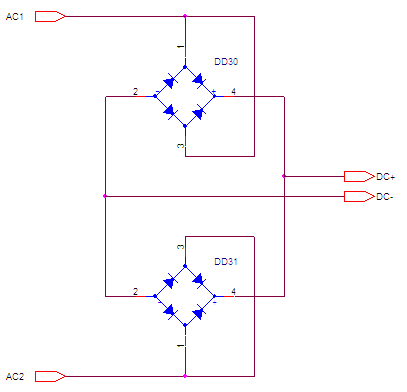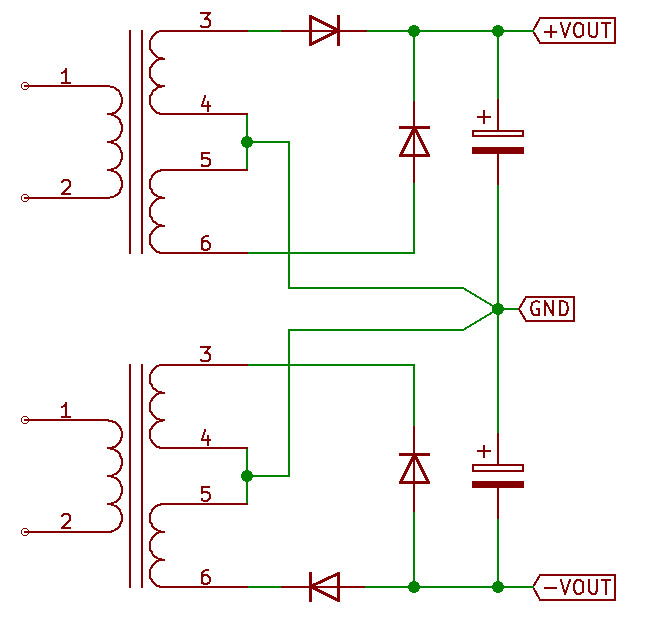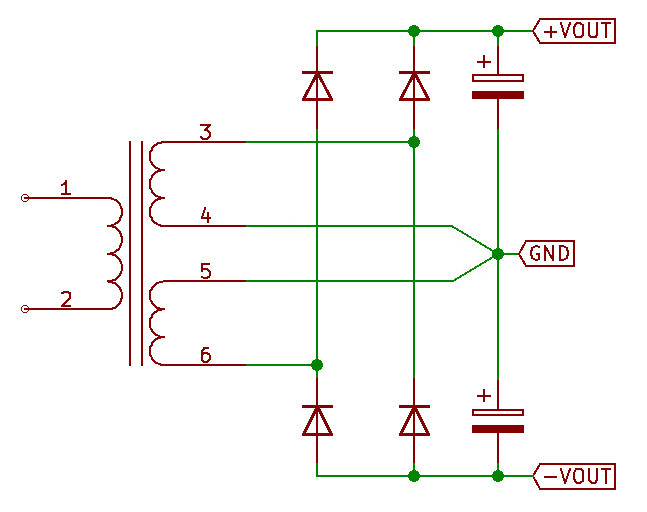Mike Hanson
Trying to understand...
It appears that the Naim NAP250 uses parallel full wave bridge rectifiers. Is this to handle more current, or would this act as fault tolerant redundancy?
Is this the circuit that would apply?

Is this the circuit that would apply?




